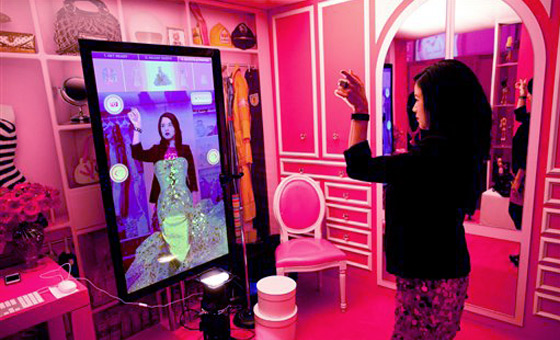
The Pokémon GO madness of summer 2016 has long since subsided, but the appetite for the technology behind it endures in the capital. Augmented reality (AR) has far more potential than just smartphone games – a point underlined by its consistently growing reputation in other sectors. We recently wrote about the world’s first augmented reality cocktail menu, ‘MIRAGE’, launching in May at the Michelin-starred City Social. The app utilises AR tech to reveal vividly appealing designs when you point your phone at a drink. However, the technology is also making a splash in retail; here we take a look at what’s happening with AR in London, and what it could mean for shoppers.
Augmented reality taking to the streets of London
Last year, the Charlotte Tilbury shop at Westfield shopping centre saw the launch of a ground-breaking piece of tech, devised by the London-based AR consultancy and software provider Holition. The new branch opening of the wildly popular cosmetics brand unveiled a “magic mirror” that digitally superimposes a variety of makeup looks onto the faces of customers, allowing them to try before they buy. The virtual mirror provides a surprisingly realistic experience, successfully capturing the subtlety of how Tilbury makeup blends with natural skin tones when actually applied. This method brings an unprecedented level of convenience to London shoppers, who would otherwise have to test products out in the flesh or take a leap of faith.
Covent Garden was also host to an augmented reality spectacle, but on a larger scale. Over the festive period in 2016, the AR app Blippar and Hearst Magazines partnered to transform the area into the world’s first AR retail district. The app was activated across over 140 participating shops in Covent Garden, including fashion brand such as Ted Baker, Paul Smith, and The Watch Gallery, as well as many other shops and even restaurants. The AR experience was further complemented by bespoke and interactive gift guides, curated by style editors from Heart’s leading magazines. The initiative served to show the huge potential AR has in terms of improving the consumer experience.
The online sphere
While augmented reality has been flexing its muscles in brick and mortar stores, online shopping has been far from idle. Shopping online continues to grow in popularity with Londoners´ but it still has the drawback of uncertainty about how a product will look in the flesh. That’s where AR comes in. Several brands are incorporating the technology into their online stores so that their customers can get a more tangible feel for the products. This means people who prefer to shop in the comfort of their own home can simulate an in-store experience, but without all the hassle.
For instance, the online glasses retailer Edel-Optics feature a 3D online fitting service for their frames. Through the product page, shoppers can select 3D fitting and try on the glasses of their choosing virtually, using their webcam. For something as style-sensitive as a pair of glasses, it’s not hard to see why many people may favour this approach over the potential embarrassment of trial and error in public! Plus, for online only stores, it’s proving a great chance to bridge the gap between online convenience and the tangible in-store experience. It doesn’t just apply to fashion, either. Perhaps recognising the reluctance with which many people go to Ikea, the Swedish homeware giants have offered an AR catalogue for some years already. The app allows you to test the look and size of furniture in your home and, most importantly, you can choose how to navigate the store yourself for once! See it in action in the video below.




